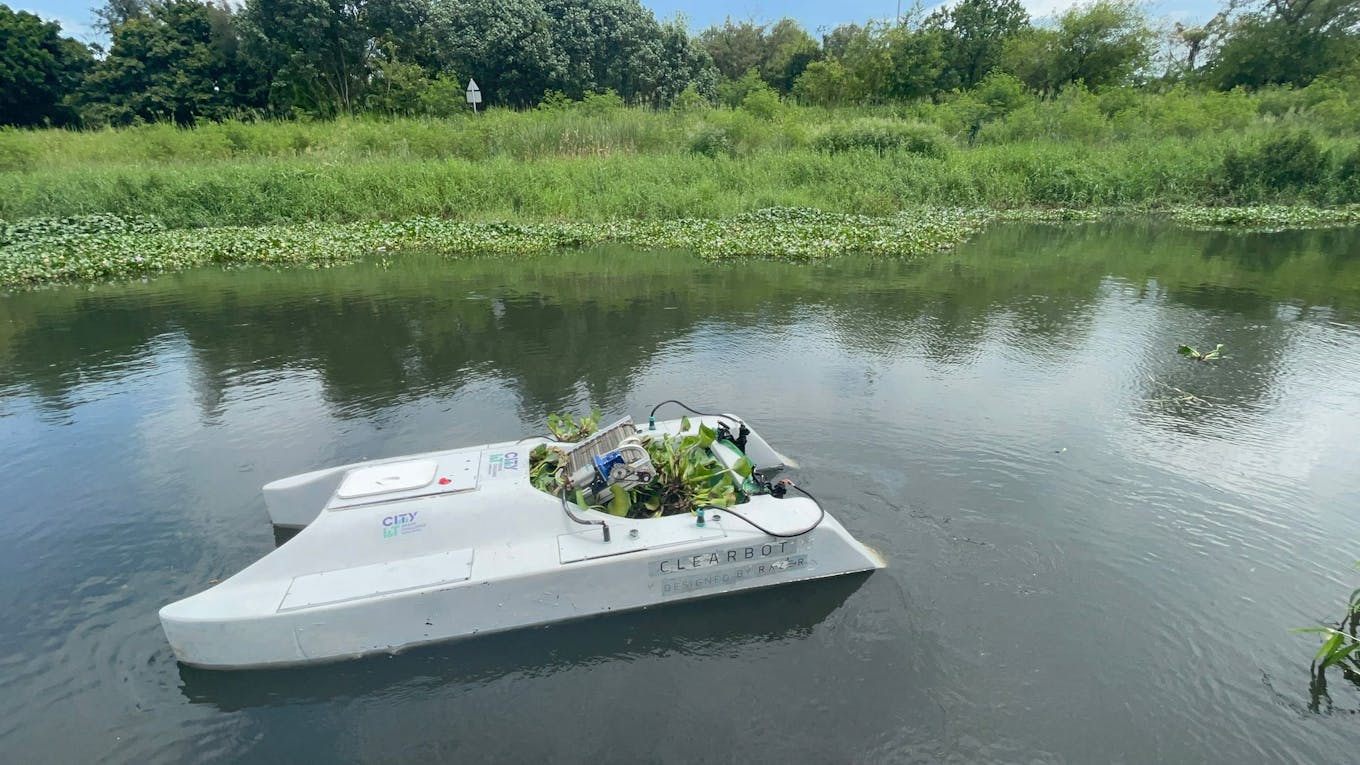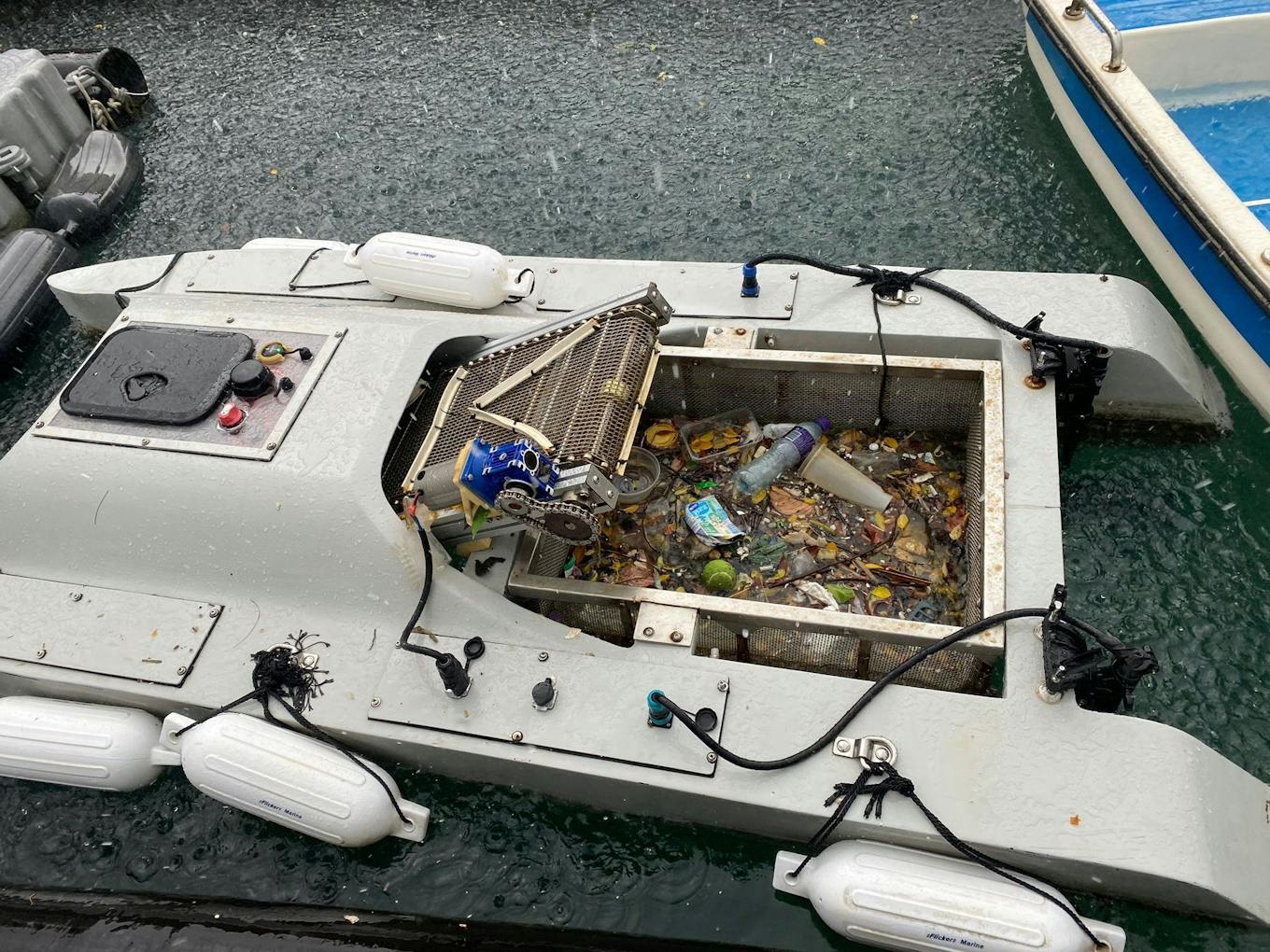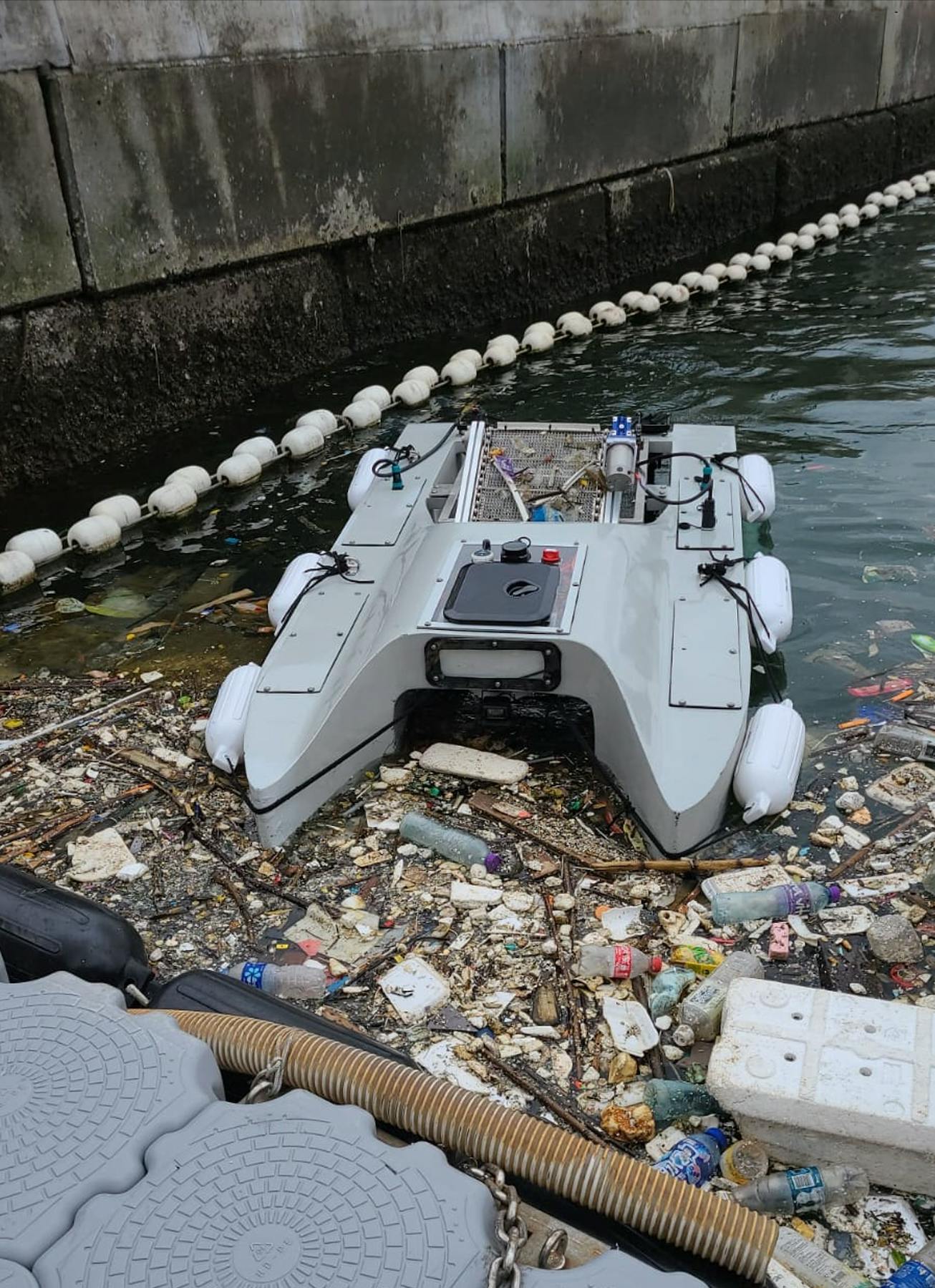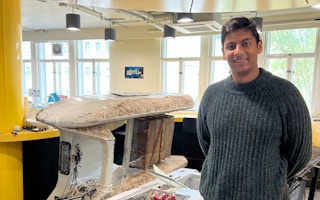Sidhant Gupta still remembers the shock and dismay he felt on a 2019 trip to Bali when he saw the amount of rubbish polluting the sea. Though there was some effort to clean up the debris, it couldn’t keep up with the waste already present, and – as Gupta soon found out – the amount of refuse that was entering the water on a daily basis was unimaginably large.
To continue reading, subscribe to Eco‑Business.
There's something for everyone. We offer a range of subscription plans.
- Access our stories and receive our Insights Weekly newsletter with the free EB Member plan.
- Unlock unlimited access to our content and archive with EB Circle.
- Publish your content with EB Premium.
“There were teams of people pulling trash out of the water from boats at Canggu beach,” said Gupta, founder of Clearbot, referring to a beach on the south coast of Bali. “We spoke to them and learnt that this is how they’d been pulling waste out of the sea. We knew this wasn’t feasible.”
Gupta was in Bali with a group of friends from the University of Hong Kong, which sponsored the trip as a way to incentivise students to find solutions to environmental problems. Seeing the issue first-hand prompted Gupta and his friends to put their minds together to assemble a radio-controlled vehicle that could collect free-floating rubbish in the sea. After drafting some plans, they spent the next few days visiting hardware shops around town to source parts and equipment, before building and testing their design at their vacation rental home’s swimming pool. “The best way to describe our vehicle at the time was ‘a few pieces of aluminium put together and some netting,’” Gupta joked.

Clearbot’s first prototype, which the team assembled and tested in Bali. Image: Clearbot
Though rudimentary, the team brought their prototype to sea and used it to collect discarded water bottles – much to the bewilderment of surfers, beachgoers, and refuse collectors. The warm response went beyond the team’s expectations, and it was at that moment that Gupta knew they were on to something.
“Though the prototype didn’t pick up too much rubbish at first, the reception proved that there was a need for it,” he said. “We knew that if we made the boat bigger, people would actually use it to collect refuse; we knew what we needed to do back in Hong Kong.”
Inspired by the results of the project, Gupta founded Clearbot in September 2020. Through the help of some partners, his team assembled and launched a solar-powered marine vehicle, dubbed Clearbot Neo, which uses artificial intelligence (AI) to detect and collect marine debris.
The vehicle is equipped with an onboard camera, sensors and a data collection system, which it uses to self-navigate, spot and clean up different forms of rubbish such as plastic, oil, invasive weeds and general refuse. The Clearbot Neo can be controlled remotely or run on autopilot and collects up to 15 litres of oil and around 200 kilograms of rubbish a day. In addition to cleaning up waste, the boat can also be used in surveillance and rescue missions and to deliver cargo.

Clearbot Neo collecting invasive weeds. Image: Clearbot
Gupta is one of 10 winners in this year’s Eco-Business A-List awards, which celebrates movers and shakers in the sustainability sector within Asia Pacific.
He tells Eco-Business how AI advancements will shake up the sustainability space, and the role that Clearbot will play in the global fight against marine pollution and waste.
You founded Clearbot in September 2020. How have the past two and a half years been for the company?
The last two and a half years have been exciting. After our initial model in Bali, we built the prototype of our first fibreglass boat in December 2020, which was a big milestone for us, but we wanted to take things further. We were fortunate enough to partner with Razer Inc., an electronics and gaming hardware company. We contacted them at the Consumer Electronics Show, which was held virtually in January 2021, and asked if they were interested in helping out with our machine, which was still quite small at the time. Razer agreed and essentially helped with the design of our first commercial boat, while we handled the engineering and manufacturing.
With their help, we launched our first Clearbot Neo in June 2021. Today, we have a fleet of 10 boats – eight in Hong Kong and two in India. We built and assembled the first boats in our office at the University of Hong Kong, and now we have a manufacturing partner in India that helps with the building and assembly of the boats. Achieving a fleet of this size and transitioning from a prototype to an actual business was our dream just a year ago, so we’re very happy to reach this point.

The Clearbot Neo is able to collect up to 200 kilograms of rubbish a day. Image: Clearbot
The Clearbot Neo uses AI to clean the harbour, canals, rivers and soon, oceans. How has ocean pollution worsened over the last few years, and how will the Clearbot Neo use AI to alleviate the issue?
We’re producing more waste – especially plastic waste – than ever before, and recycling systems simply can’t keep up with the scale of plastic production. The Covid-19 pandemic also led to a lot of waste from face masks, personal protective equipment and food containers being thrown out.
We believe that our AI solution will help to mitigate the issue. Firstly, robotics solutions like our Clearbot Neo boats are very much scalable and don’t require as much manpower to operate. Our current boats can also be controlled remotely and can essentially drive themselves. We can deploy them, assign areas to cover, and they can go on their own. They can also charge on their own. Though the boats run on batteries, they charge via solar power after automatically connecting to a solar-powered docking station, which we have deployed at various points around Hong Kong. We have a two-man crew running our 10-boat fleet.

The company’s Clearbot Neo collecting rubbish in Hong Kong’s harbour. Image: Clearbot
Secondly, AI is great at processing data; it can analyse and understand things at a larger scale, which can help in solving issues to do with the environment.
Our boats photograph each piece of waste that they collect and all data is saved to a database. Each boat then uses the data to generate a report, which we can use to show our clients. We’ll know, for example, how many plastic bags, plastic bottles or face masks it has collected. This data is essential, allowing us to see when rubbish is most present in the water. In Hong Kong, this usually peaks during summertime when there are typhoons and refuse is swept into the sea by the wind and then swept around by waves.
This hard data can also be used by NGOs to push the government to make policy changes surrounding single-use plastics, and to hopefully stop them from entering the ocean. To bring about better policy change with regard to materials, you need months of data to back those decisions up, which our boats can help with. We have GPS data of where the trash is, and which points they are entering the water.
Our AI solution will also enhance transparency around water pollution in Hong Kong. We’ve been working with different departments within the Hong Kong government to deploy our machines including the Highways Department, the Civil Engineering and Development Department, Environmental Protection Department and the Drainage Services Department. They’re all very happy with our boats. As we expand, we hope there will be more transparency in disclosing this data to the public.
What sparked your interest in sustainability?
When I was in university, I did a lot of travelling for various engineering projects, and I slowly started to see environmental problems in the water.
It was one coral mapping project we did in Mindoro, Philippines in 2018 that hit me the hardest. We swam down and saw that the coral reefs were completely bleached, most likely due to climate change. I felt terrible to see this happening – it’s one thing to read about it in the news, and a whole other thing when you see it with your eyes.
Through these projects, I felt that the ocean’s problems were my problems. After graduating, I knew that I had to do something about it.
What are some of the advantages of launching a start-up in Hong Kong?
There is funding here, especially from the government. They are willing to spend money to fund and try out your solution. There are grants available and strong capital markets here. We’re also right next door to mainland China, and now that borders are fully open, it is easy to head over to places like Shenzhen to source components and parts, as well as conduct manufacturing and production.
Clearbot has received funding from Alibaba, Gobi Ventures, and other co-investors. How does the company plan to use this funding to scale?
We want to go from 10 boats to 100 boats, so what’s most critical now is the need to fix our operations model. If something doesn’t go right with one of our 10 boats, we can easily address the issue across all our existing boats – the same cannot be said for a fleet of 100 boats, which would be very difficult to manage.
These funds help us to perform critical research and development into building automation for automatic docking, for example.
The funding will also allow us to scale up our operations in Hong Kong and India. We hope to expand within India, which has long dealt with the issue of water pollution. Right now, the government in India is investing a lot of money into cleaning up the rivers – something they never really did before, so the timing is perfect for what we are doing and presents a huge market for us to tap into. If we’re able to scale the company within India first, we’d be more confident about scaling within other regions such as Southeast Asia and North America.
I believe it will take tens of thousands of Clearbot Neos to be deployed worldwide until we see a difference, so there’s a long road ahead of us. But I don’t see us as the only solution; we are playing a part in solving a big problem.
Read our stories with other A-List winners here.














